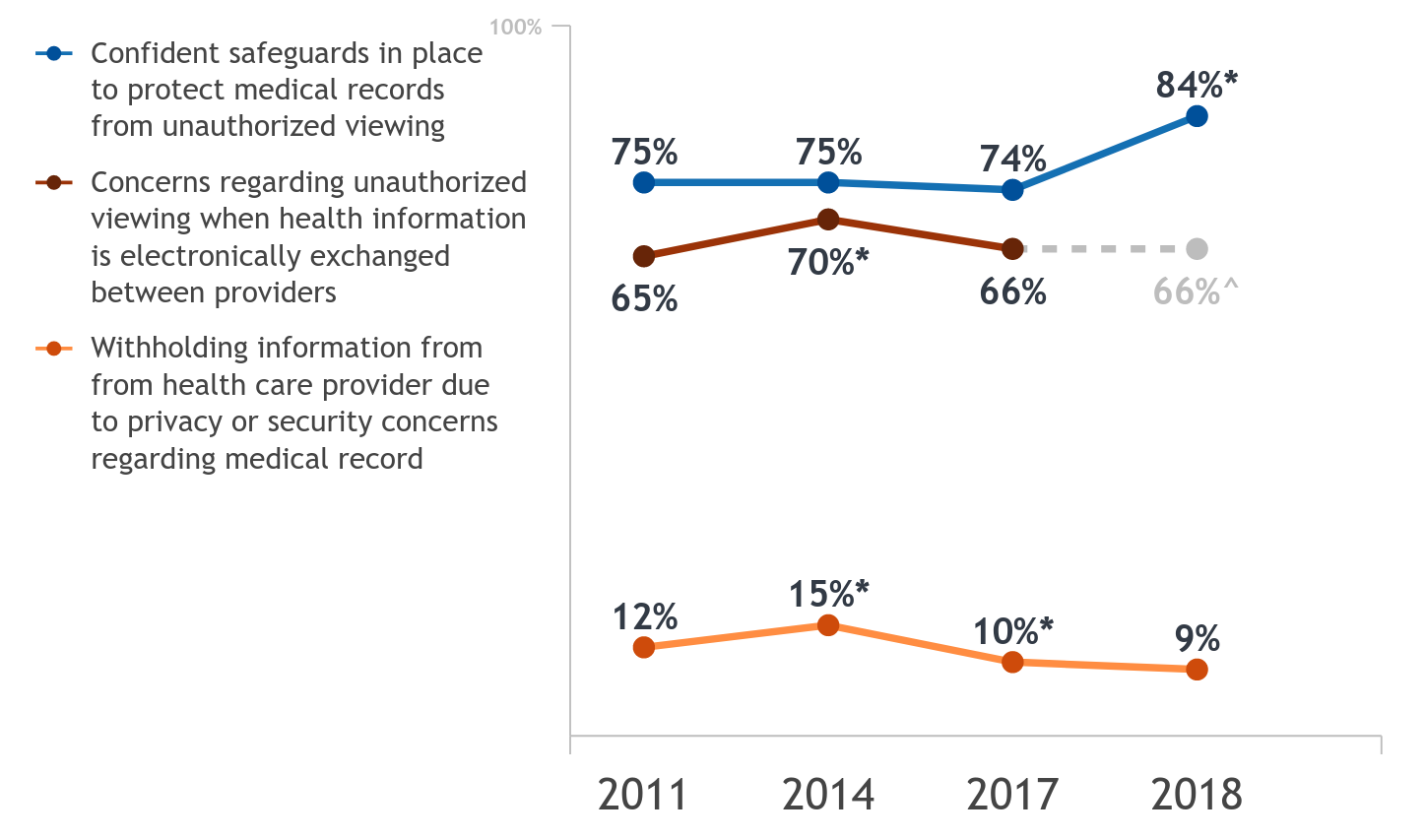
A majority of individuals (84%) are confident their medical records are safe from unauthorized viewing, but have concerns (66%) when health information is electronically exchanged. More individuals are now confident their records are safe from…
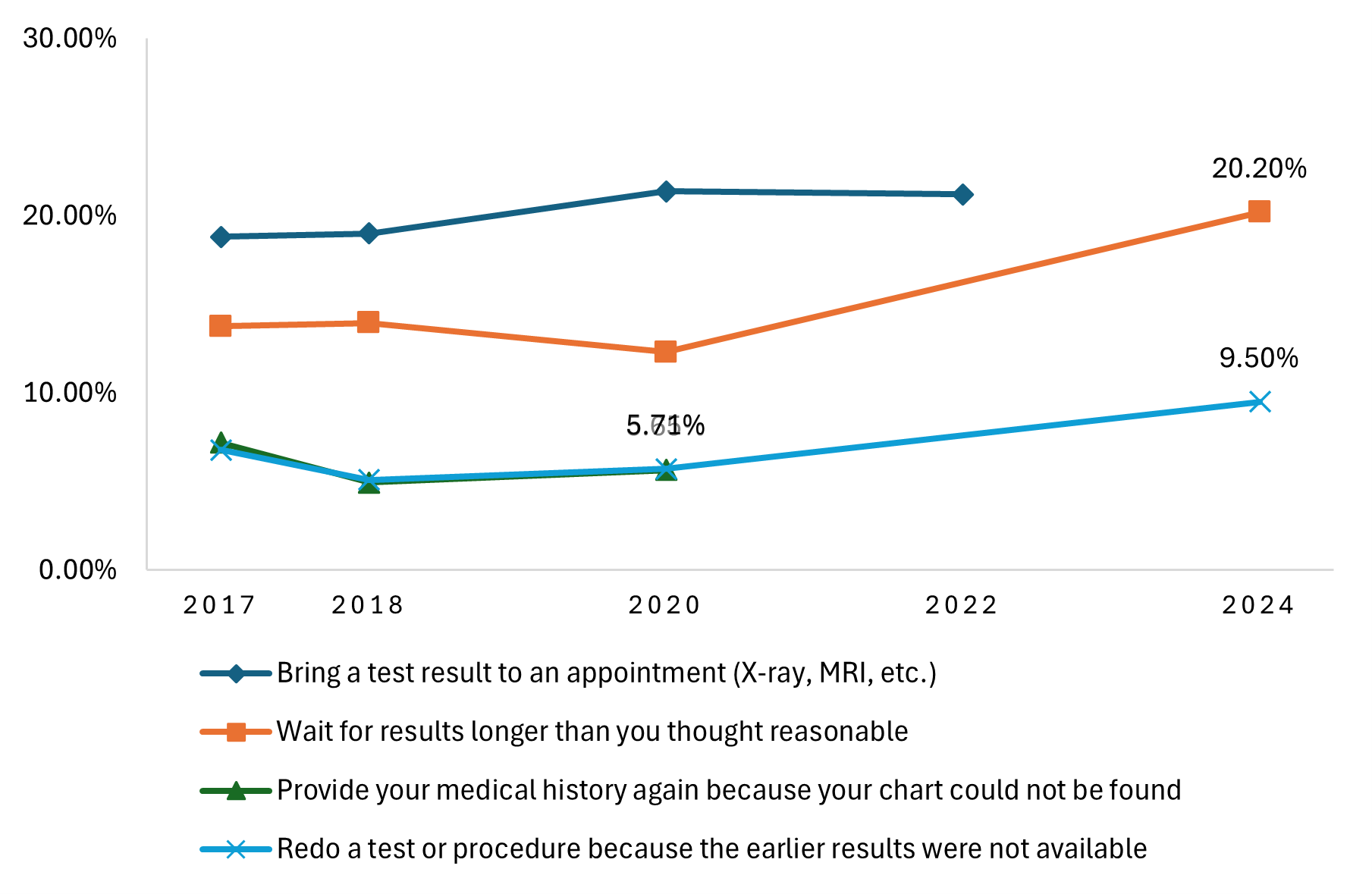
Most individuals—87% in 2024—report having at least one health care visit in the past year. Despite advances in interoperability and the implementation of anti-information blocking provisions, many of these patients continue to experience gaps in…
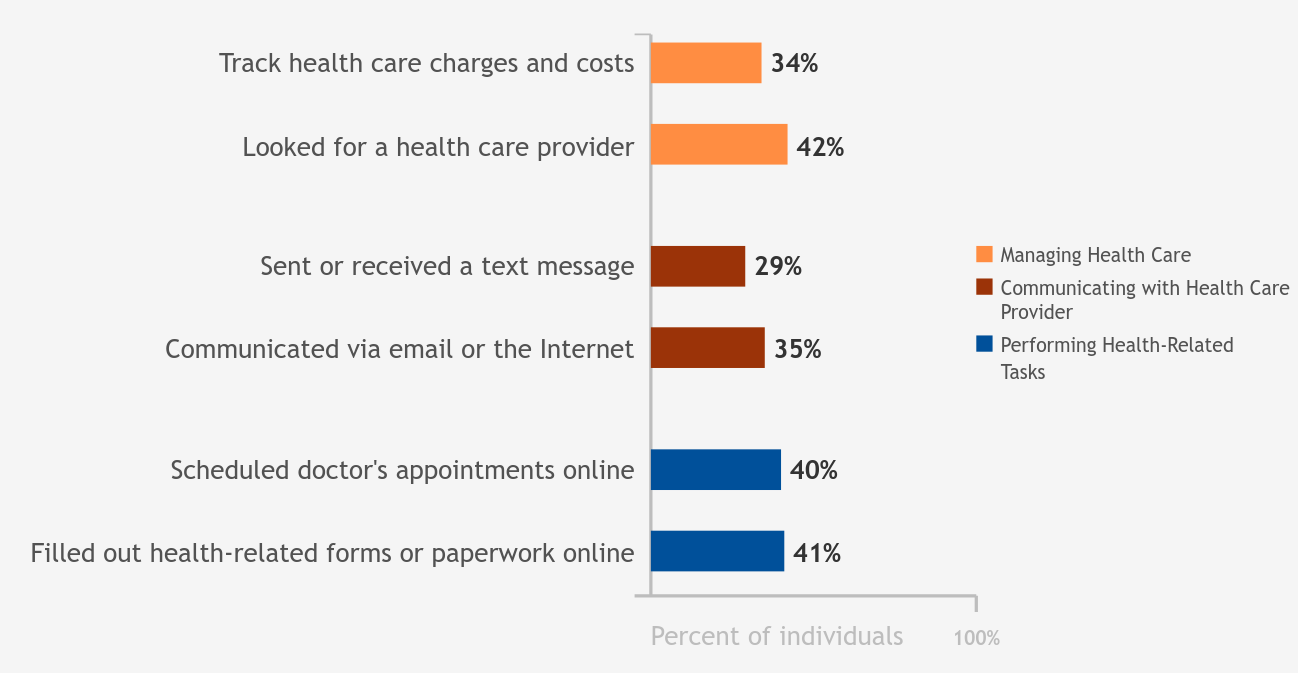
Overall, 1 in 3 individuals tracked health care charges and costs with a computer, smartphone, or other electronic means in the past 12 months. About 4 in 10 individuals filled out paperwork related to their health care or made health care appointments…
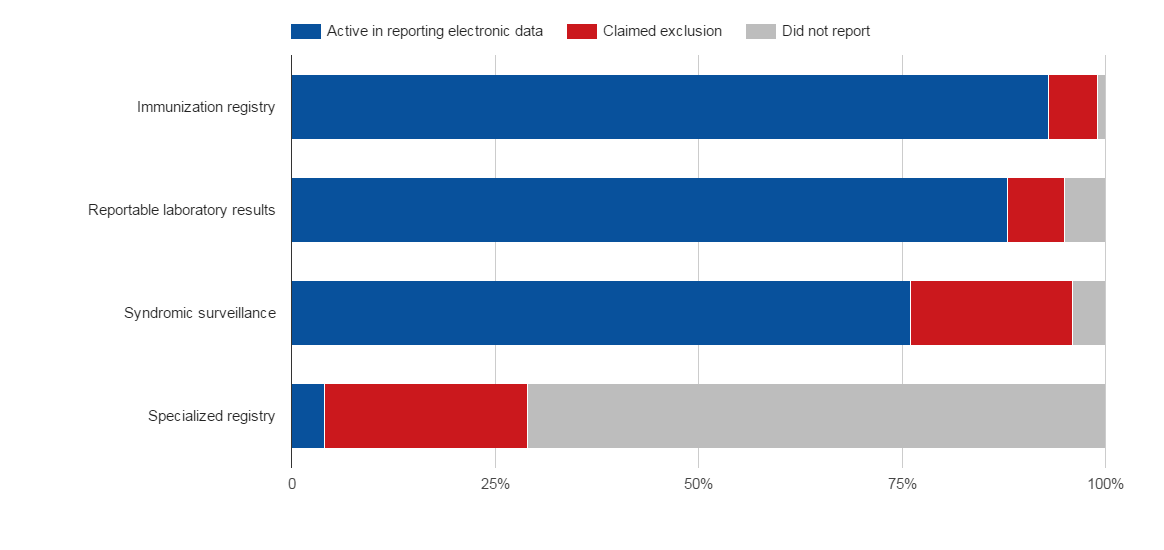
In 2015, 4,043 eligible and Critical Access hospitals (EH) reported to the Medicare EHR Incentive Program. 90 percent of hospitals attested to stage 2 of meaningful use. 93 percent of all hospitals reported active engagement with an immunization registry…
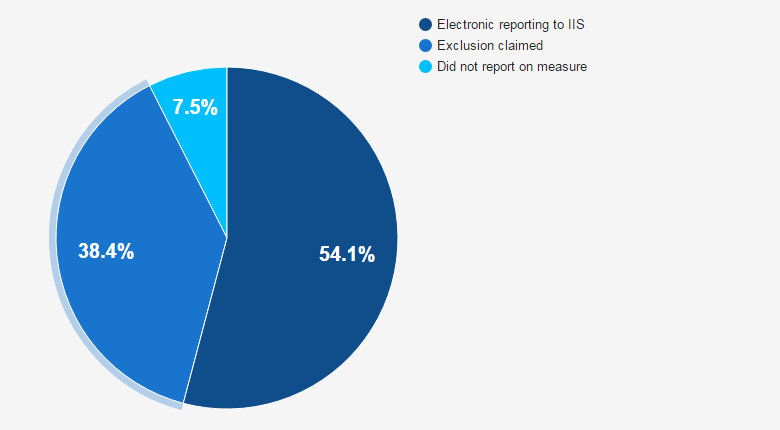
In 2015, 54 percent of eligible professionals (EP) participating in Stage 2 of the Medicare EHR Incentive Program and 44 percent of professionals participating in modified stage 2 electronically reported immunizations to local registries.
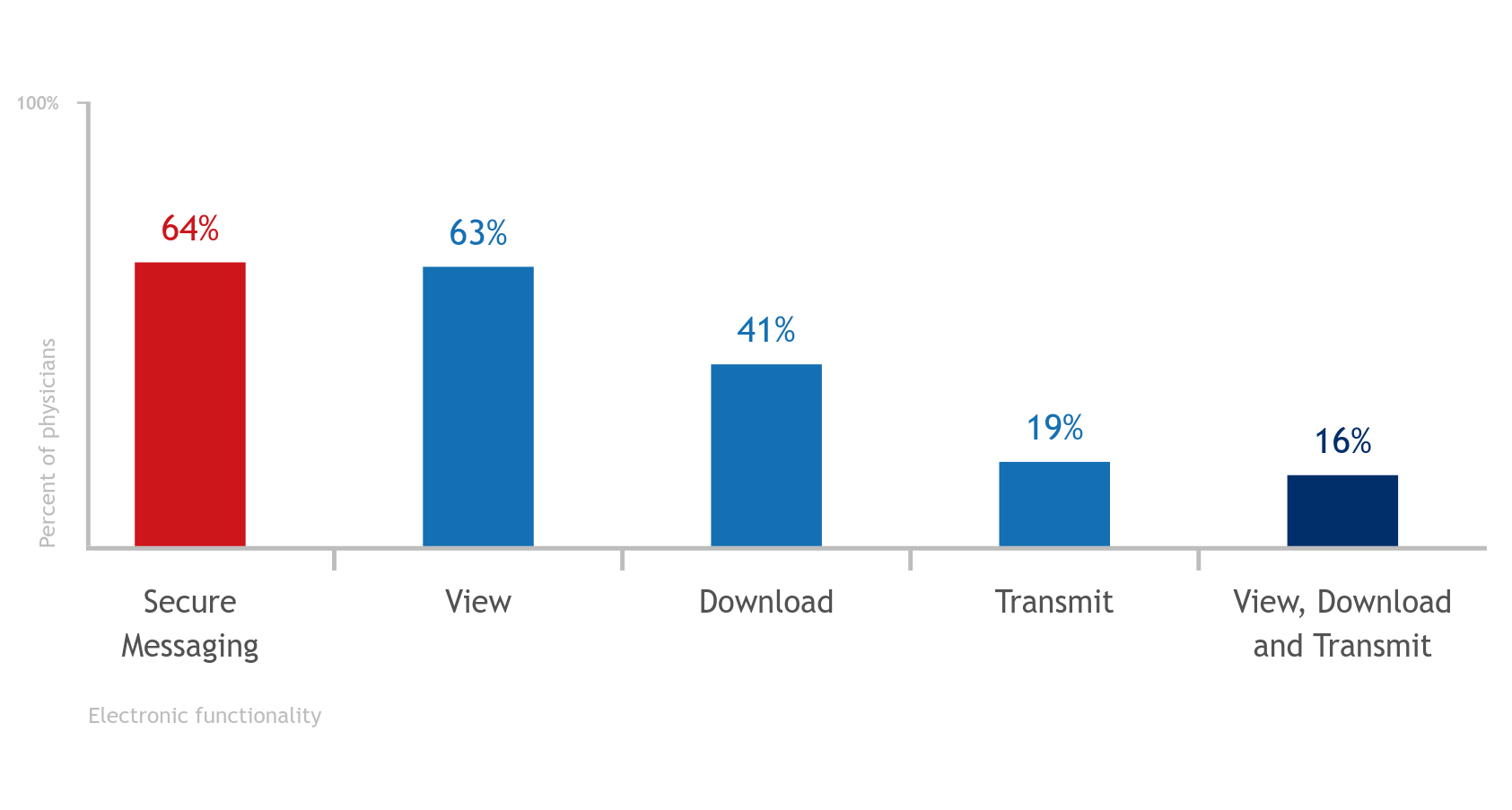
In 2015, 64% of physicians had an electronic health record (EHR) with the capability to exchange secure messages with patients, <br/>. Furthermore, 63% of physicians had the capability for their patients to electronically view their medical record…
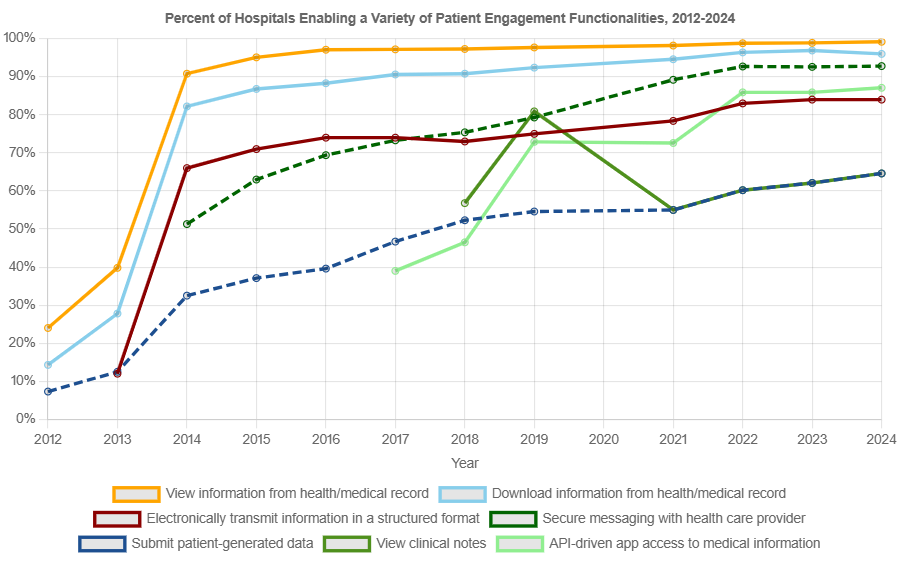
From 2012 to 2024, U.S. non-federal acute care hospitals reported a gradual increase in patients’ ability to access their health information and engage with hospital providers. By 2024, nearly all hospitals enabled patients to view and download their…
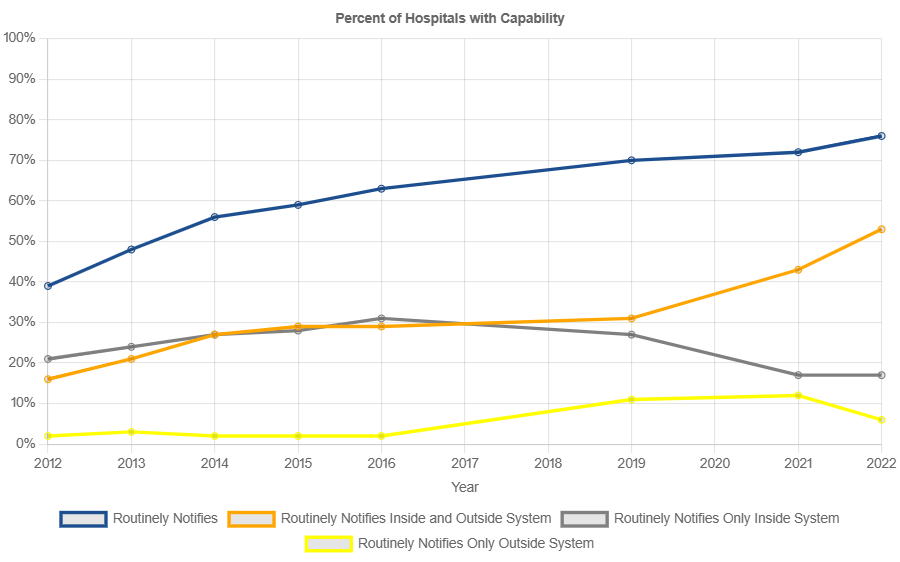
In 2022, 3 in 4 non-federal acute care hospitals routinely electronically notified a patient's primary care provider upon his or her entry to the hospital's emergency department – a nearly two-fold increase since 2012. Seventy percent of all…
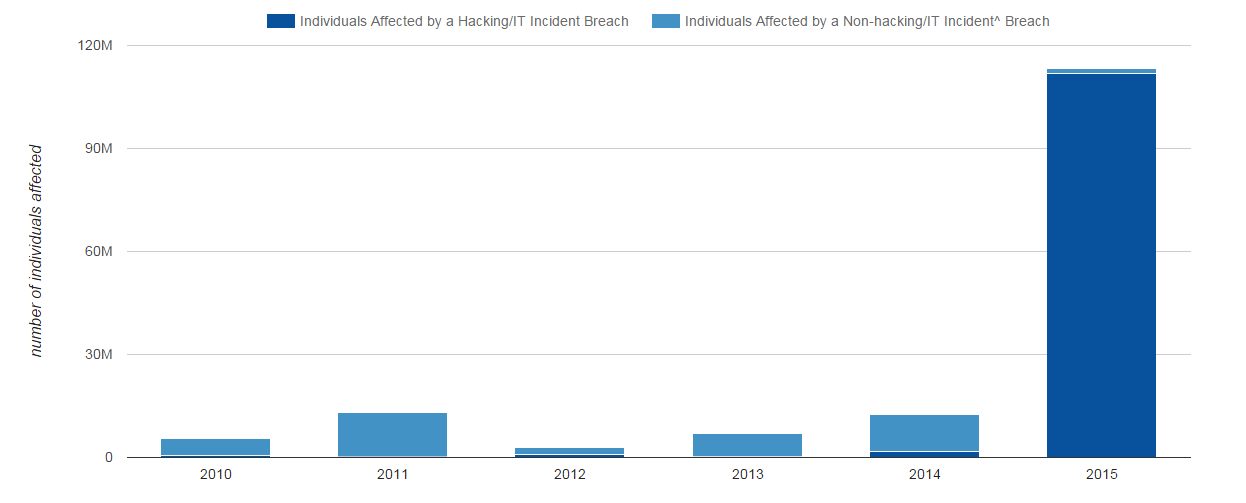
Based upon data collected by the HHS Office for Civil Rights, as of February 1, 2016, protected health information breaches affected over 113 million individuals in 2015. In 2015, hacking incidents comprised nearly 99% of all individuals affected by…
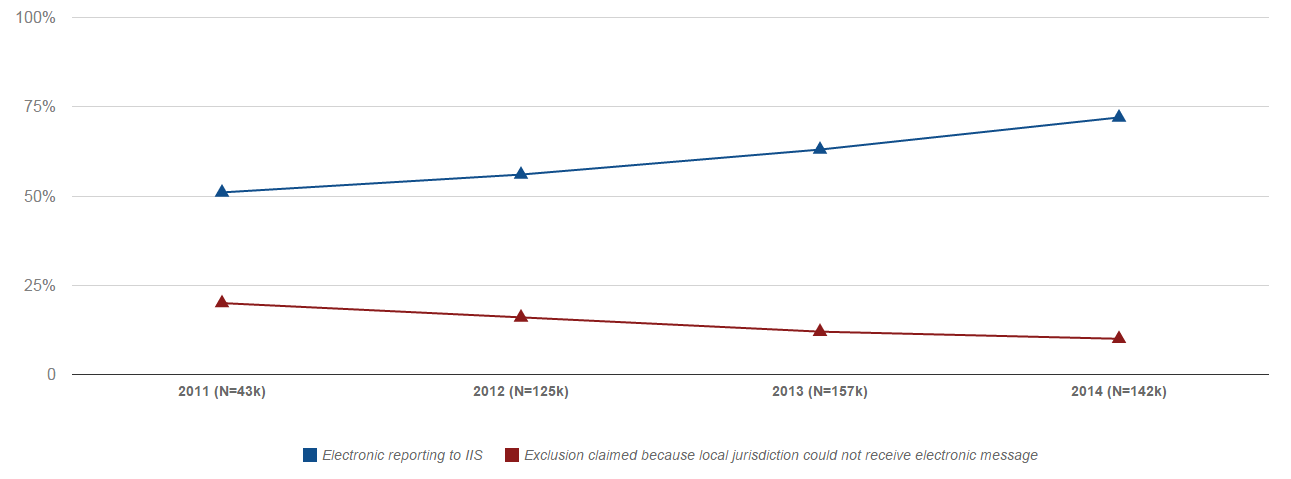
Electronic report to Immunization Information Services (IIS) was an optional measure for participants at stage 1 of the Medicare EHR Incentive Program, and a required measure for stage 2. Since 2011, electronic IIS reporting among eligible professionals…
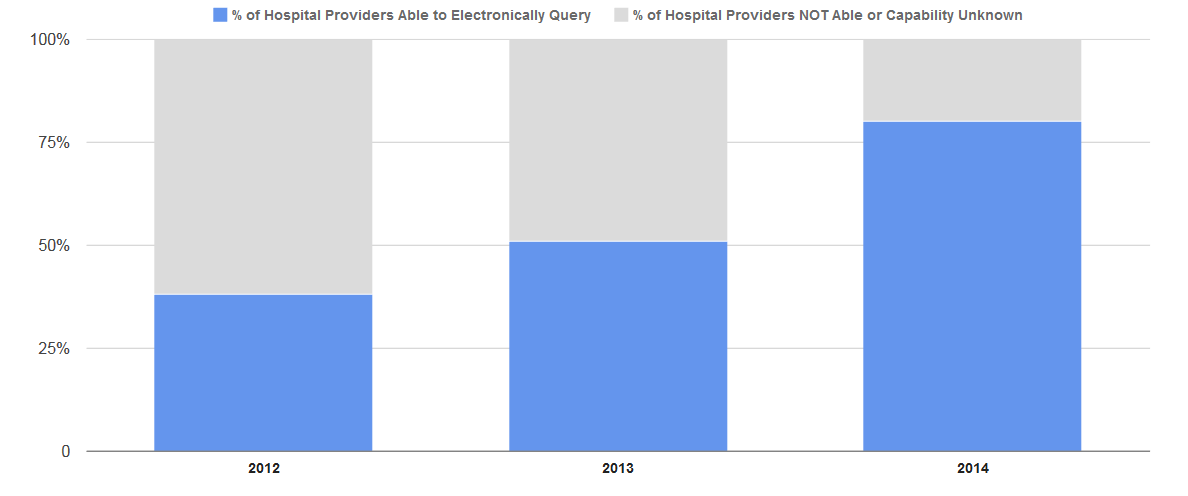
See Quick Stat, Electronic Health Information Exchange by Hospitals, for statistics on hospitals’ electronic query capabilities after 2014. The below Quick Stat is preserved for historical data.
As of 2014, 80 percent of non-federal acute care hospitals…
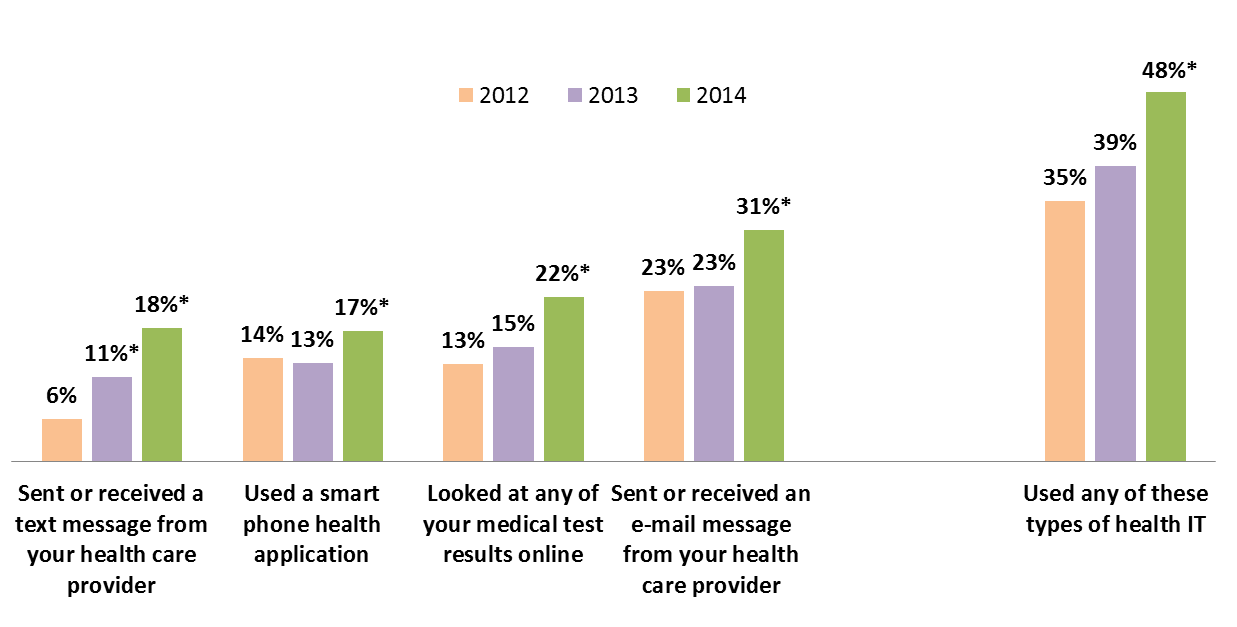
Individuals use of certain types of information technology to interact with their health care provider, view their personal health information, and track their health and wellness grew significantly between 2013 and 2014. The percent of individuals who…
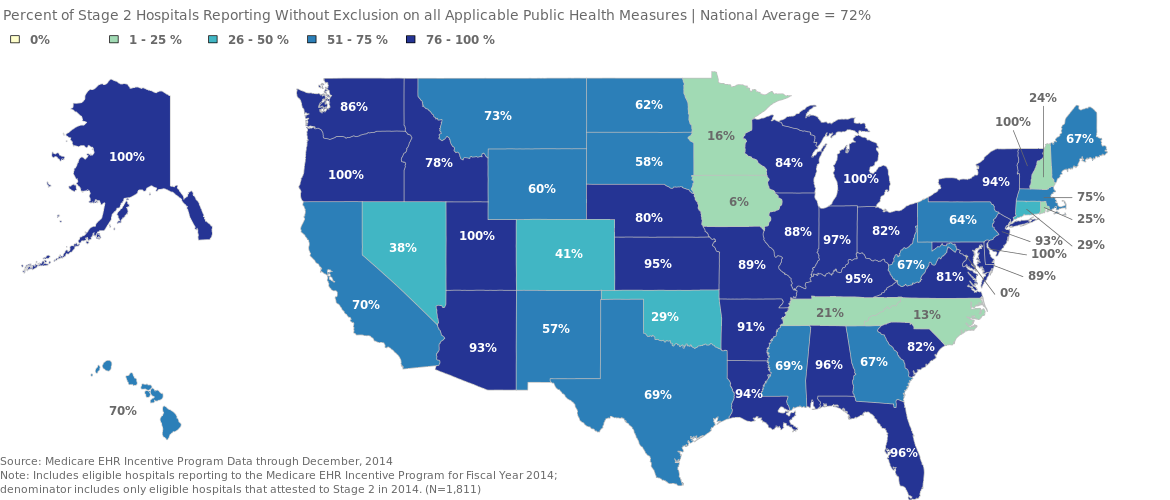
The CMS EHR Incentive Program provides incentive payments for eligible hospitals to adopt and meaningfully use certified health IT. Among the requirements to receive an incentive payment, participating hospitals must report on public health measures.…
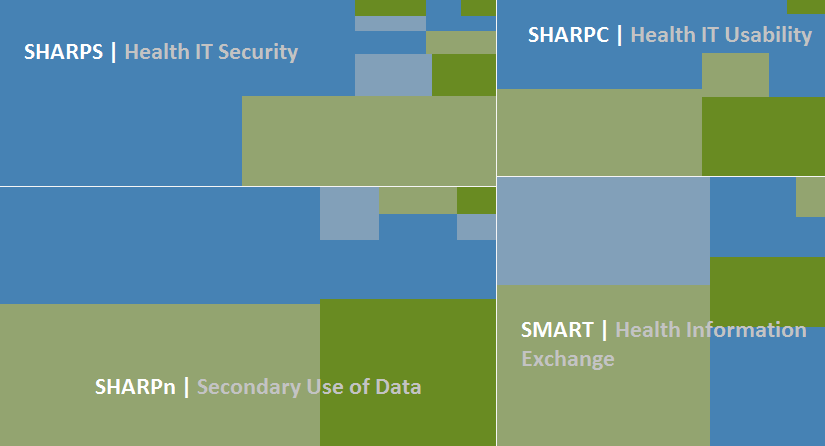
The Office of the National Coordinator for Health IT established the SHARP program to support innovative research and to address well-documented problems that impede the adoption and use of health IT. The SHARP program covers four subject areas:
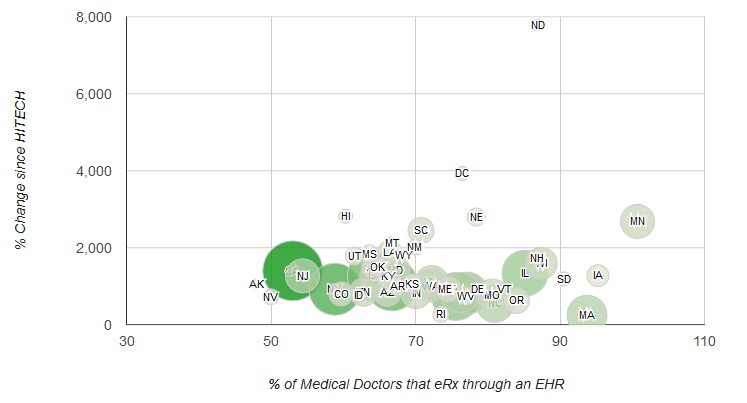
In December 2008, less than two months before the passage of the Health Information Technology for Economic and Clinical Health (HITECH) Act, fewer than 7% of all U.S. medical doctors electronically prescribed (e-prescribe) patient medications through an…
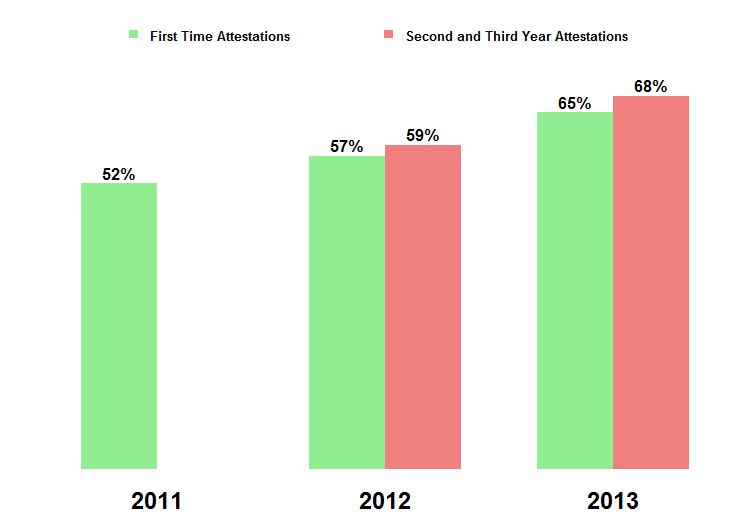
Approximately 7 out of 10 primary care physicians eligible for the Medicare EHR Incentive Program selected the Immunization Meaningful Use Menu measure without exclusion in 2013. 65 percent of 2013 first time attesters selected this measure without…
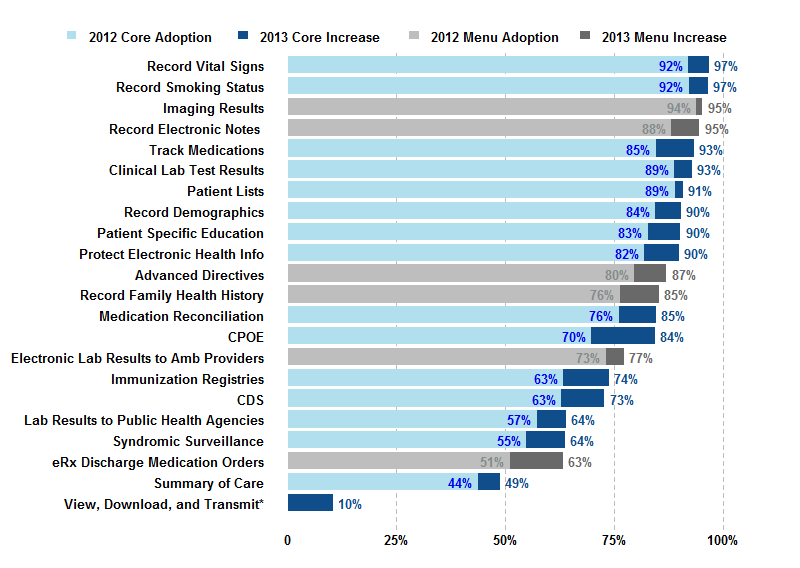
Stage Two of the Meaningful Use program consists of 22 core and menu objectives. A subset of hospitals will be eligible to begin attesting to these Stage 2 objectives in 2014. In 2013, adoption rates for 20 of these objectives were over 60 percent.…
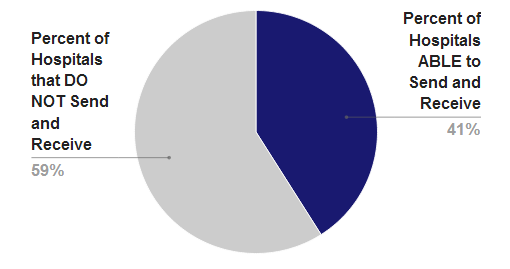
Approximately 4 in 10 hospitals (41%) report that providers at the hospital are able to send and receive secure electronic messages containing patient health information (e.g., medications) to and from sources outside of the organization or hospital…

